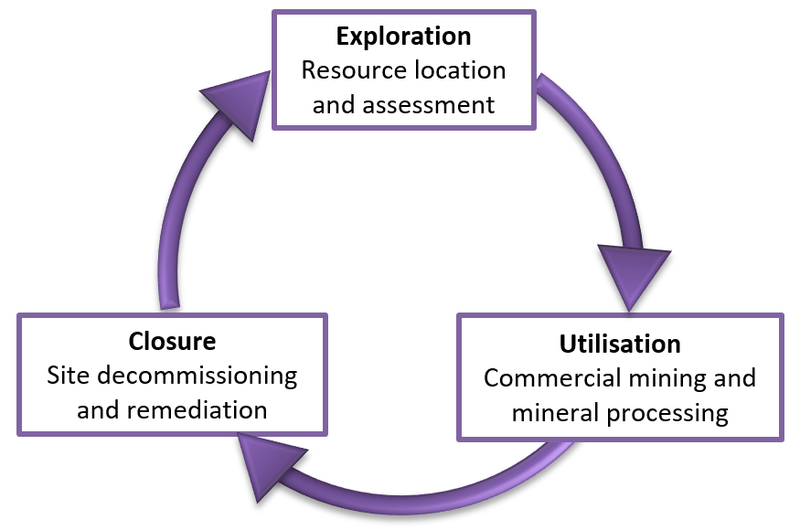Introduction to DSM Operations
All mining operations (terrestrial and marine) occur over three main phases, exploration, utilisation and closure. DSM activities are no exception to this. All DSM operations can be expected to require a set of basic systems to extract the resources, these are typically likely to include:
Seabed collector system (e.g. excavator, bulk cutter, crawler etc.): These systems would be positioned on the seafloor and would use excavation or extraction systems to retrieve the minerals. The subsea systems tend to operate on tracks for improved traction and manoeuvrability.
Riser and Lifting System (RALS): A lifting system is required to move the mined material back to the surface using submerged drive systems to power hydraulic pumps connected to a riser system. The lifting pumps would transport the collected ore slurry up to the mining support vessel on the surface through a riser pipe. The riser pipe could be either rigid or flexible, but would need to extend from the seafloor to the mining support vessel on the surface. A fall pipe could be installed as an option in order to return, after dewatering, the residual water from the ore fraction at a specific depth instead of surface as required.

Mining support vessel (MSV): The mining support vessel would provide a platform for monitoring and controlling the subsea mining operations. The MSV would accommodate and support the riser and lifting system in order to collect the mineral ores for further processing. The riser and lifting system, as well as the optional fall pipe, will be mobilised, operated and demobilised from the MSV. Due to the water depth associated with DSM operations, the vessel is likely to require a dynamic positioning system in order to hold position rather than anchors or a fixed mooring system.
However, please note that this study does not envisage that exploitation, in the context of marine operations, will include chemical processing operations. Onboard processing will be limited to the dewatering of recovered material to ensure that the hopper equivalent on the MSV is used as efficiently as possible.
Additional support and supply vessels (e.g. bulk carriers, supply vessels etc.): As the MSV is required to remain on station for the duration of the mining operations, additional vessels will be required to undertake tasks such as:
- Refuelling the MSV;
- Supply of provisions;
- Crew change;
- Supply of replacement parts; and
- Offloading of collected material.
All of these systems and vessels will have a potential for effects on the environment to varying degrees. The extent of any impact will be limited by the natural environment, size of the mining operation and any mitigation measures in place. The deep sea mining infographic shows a DSM set-up comprising the above systems and vessels and provides an overview of the typical impacts associated with DSM operations.
As with all commercial undertakings there are both negative and positive impacts as a result of project operations. The significance of environmental impacts will be based on the size and area of the DSM operation, the nature of the impact and the potential for recovery. The extraction processes expected to have the greatest effects are: disaggregation, lifting and dewatering. The key objective is to minimise any negative effects at the design phase, and to enhance any positive or beneficial effects as far as reasonably possible.